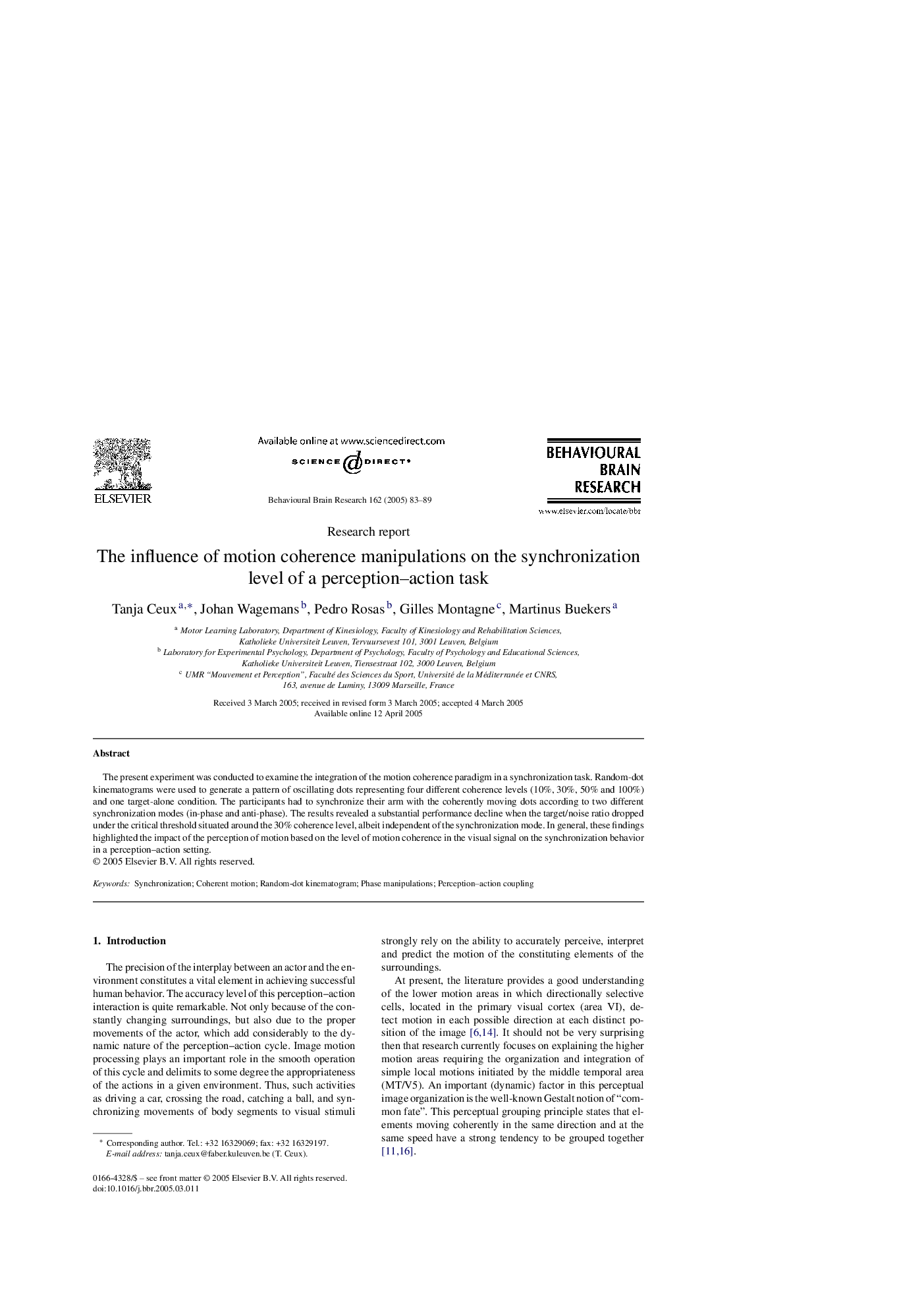| Article ID | Journal | Published Year | Pages | File Type |
|---|---|---|---|---|
| 9406547 | Behavioural Brain Research | 2005 | 7 Pages |
Abstract
The present experiment was conducted to examine the integration of the motion coherence paradigm in a synchronization task. Random-dot kinematograms were used to generate a pattern of oscillating dots representing four different coherence levels (10%, 30%, 50% and 100%) and one target-alone condition. The participants had to synchronize their arm with the coherently moving dots according to two different synchronization modes (in-phase and anti-phase). The results revealed a substantial performance decline when the target/noise ratio dropped under the critical threshold situated around the 30% coherence level, albeit independent of the synchronization mode. In general, these findings highlighted the impact of the perception of motion based on the level of motion coherence in the visual signal on the synchronization behavior in a perception-action setting.
Related Topics
Life Sciences
Neuroscience
Behavioral Neuroscience
Authors
Tanja Ceux, Johan Wagemans, Pedro Rosas, Gilles Montagne, Martinus Buekers,
